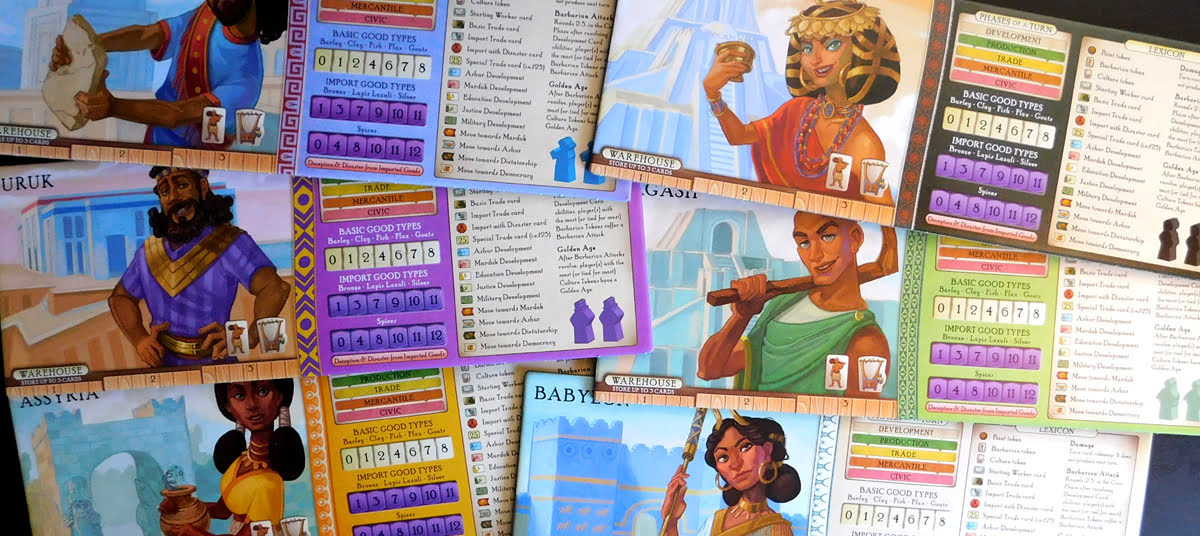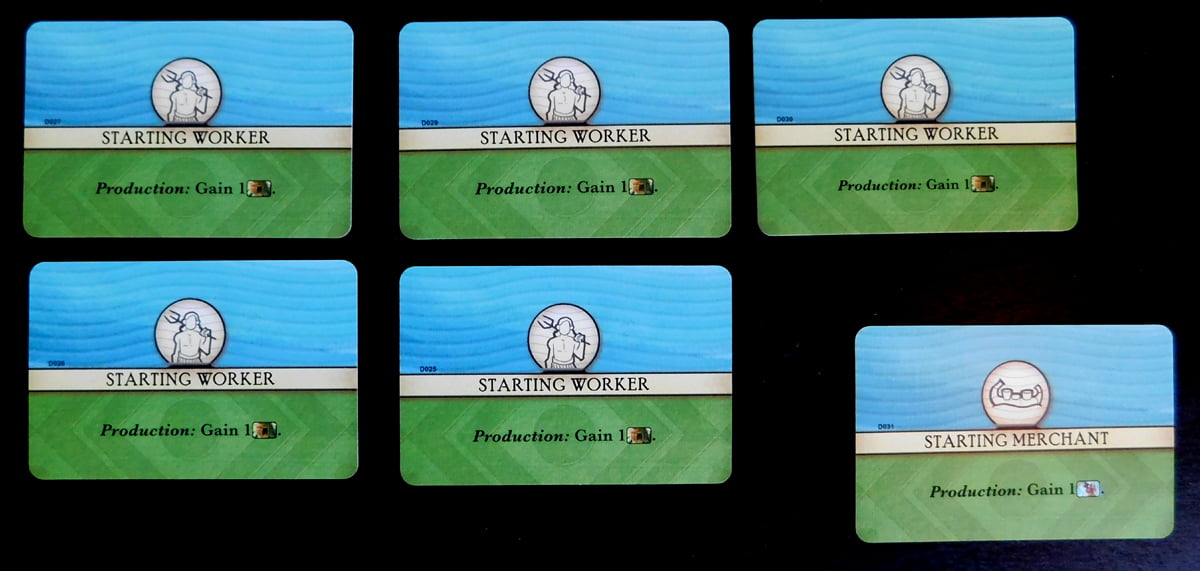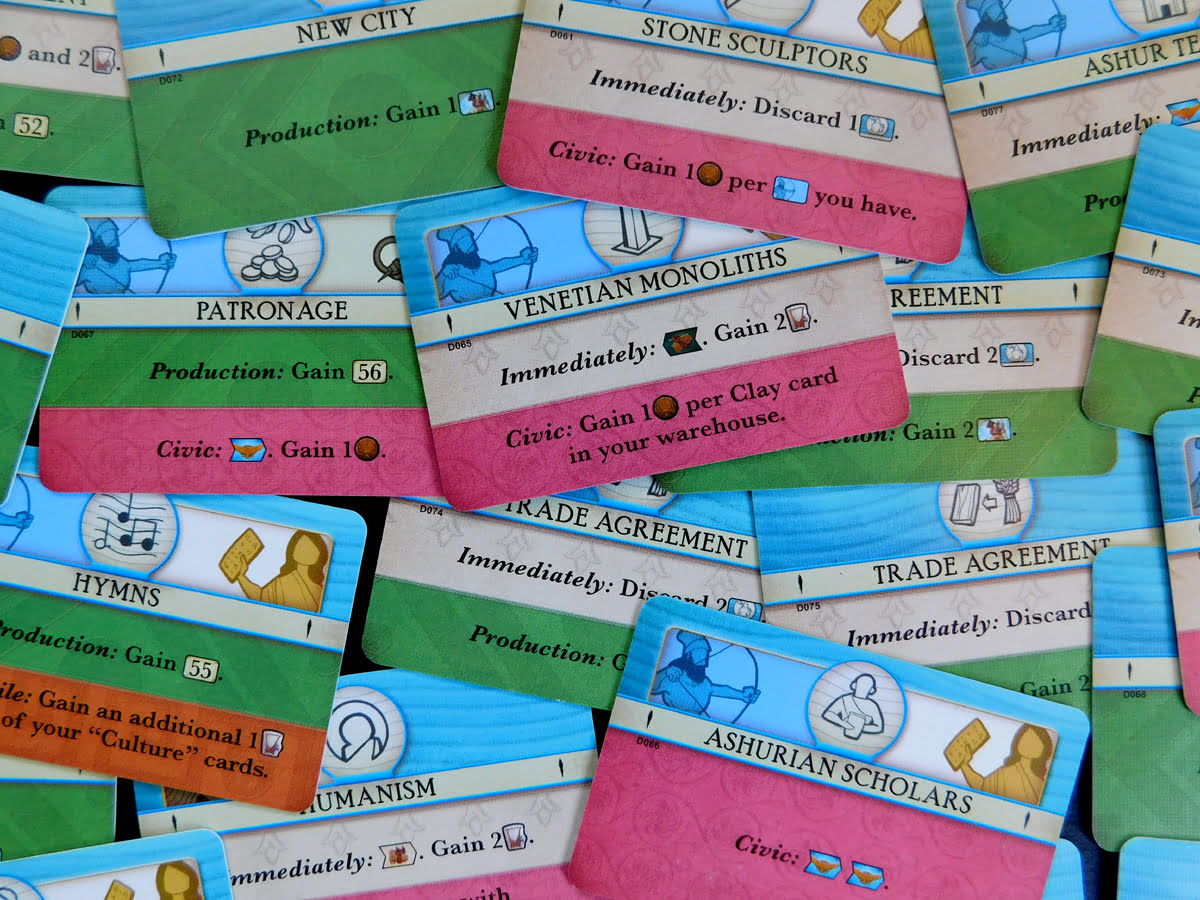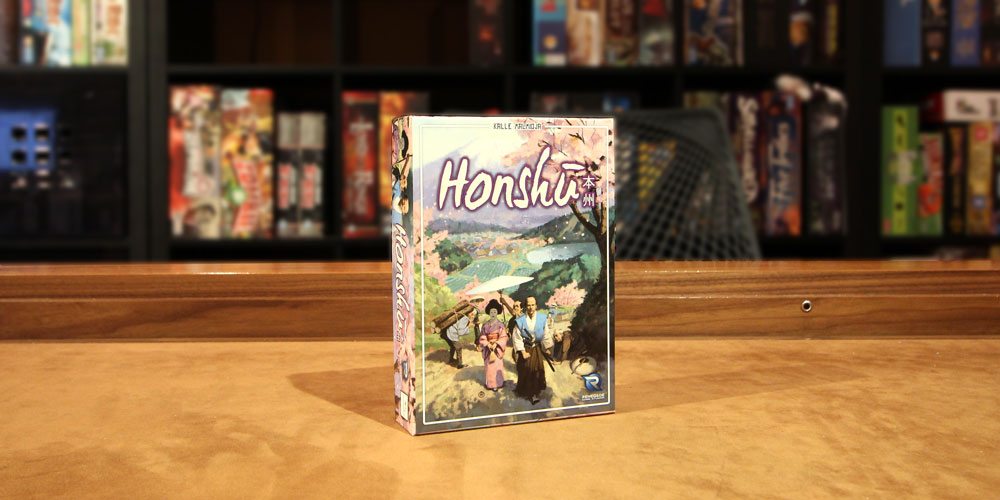
When I was a little kid my family was good friends with another family who happened to have two girls of almost exactly the same age as my older brother and me. We would get together multiple times each week, play games, go to the park, and most importantly share our then-hobby of collecting beads. Glass, plastic, etc, it didn’t matter, the more unique they were the better, and we would hoard and cherish them and then get-together and barter with each other, swapping three mundane pieces for that glass one that looked like a mouse, and so forth.
One day, we happened to visit and I neglected to bring my collection, but I still wanted more than anything to trade beads with my friends, so I asked if I could borrow a single bead from one of them, promising to pay them back for it later on. They agreed, and I found myself with seed money–well, bead money, if you will. Over the next hour I bartered and traded back-and-forth with them until I found myself in possession of an obscenely large part of their respective collections. Having started with nothing. Having started with their beads.
The story ends with my mother making me give back everything I had effectively swindled (through perfectly legitimate barter, I might add) from my friends. I was six years old. I think it’s safe to say that I’ve always liked trade and negotiation games. Which brings us to Trade on the Tigris.

What Is Trade on the Tigris?
From publisher TMG (Tasty Minstrel Games), Trade on the Tigris has an interesting pedigree. Listeners of the boardgame science podcast Ludology will be familiar with its history, as co-designer Geoff Engelstein also co-hosts the podcast, and much of the birth of the game is tied up with an inside joke that grew into an entire boardgame. The joke is to do with all the potential themes there are in our rich, versatile world and the fact that designer after designer returns to the well of “goods trading in the Mediterranean region” which keen-eyed observers will recognize to be the source for Tigris‘ title.
As time went on, the joke grew into a parody, and gradually the parody grew into something akin to tongue-in-cheek homage as Geoff and co-designers Ryan Sturm began to flesh out the concept and see if they could take a done-to-death theme and bring some new flair to it. And so Trade on the Tigris was born. The game requires 3-6 players and plays in a surprising 60-90 minutes.

What’s in the Box?
Trade on the Tigris is a hefty game. I don’t know what it weighs, exactly, but if I were forced to grab a game off the shelf to hurl at a home invader in the dead of night, this would be a strong contender. It’s brick-like box features the artwork of Kristen Pauline but which is, however charming, I think a misstep for this game. While the game began as lampoon, what it’s arrived at in the end is something closer to pastiche, and as such the warm cartoony artwork on the box seems unlikely to speak to the kind of player the game is looking to attract.
The box contains a veritable cornucopia of cards, tokens, card, player boards, cards, modular board pieces, and finally more cards. In all, the game contains:
- A 3 piece government track
- A 3 piece religion track
- Over 240 development cards (the manual doesn’t give an exact count)
- 6 Government markers (1 in each player color)
- 6 Religion markers (1 in each player color)
- 6 Player mats
- 30 Starting development cards
- 6 Starting merchant cards
- 50 Special trade cards
- 49 Imported goods cards
- 70 Basic goods cards
- Round tracker & marker
- Lots of barbarian tokens (the manual literally lists the quantity as “lots”)
- Lots of culture tokens
- Lots of point tokens
So yeah, if you didn’t get the idea, this game comes with lots. Unfortunately, like so many games these days, it doesn’t come with an efficient storage solution, instead featuring a classic down-up-down insert that forces you to keep all your myriad card types stored together in one big stack. That said, the quality of the components themselves is par for the course for TMG, with thick, sturdy bits and boards that promise to last for as long as you keep playing the game. And how long is that, you ask. Well, let’s take a look.
Playing Trade on the Tigris
Before talking about how the game plays, I would be remiss if I didn’t take a paragraph to talk about learning Trade on the Tigris. What do I mean? Well, Tigris has, without a doubt, one of the best manuals I have ever seen. It’s not a heavy game, per se, but there are a lot of moving parts and I’ve seen far simpler games vanish under the weight of their own explanations. Tigris, however, sports a manual that moves neither too fast nor too slow, carefully laying out and defining every item or term you need to know at the time you need to know it. Part glossary and part “Let’s play” guide, it’s a breezy read that never has you scratching your head or wondering if you missed something.
The game itself is an economic affair in which players race to develop their religion and government, in the process creating an identity for their nation that comes out in the form of developments, all of which results in the collection, trade, and ultimate sale of various goods.

Setup
Each player receives a civilization board (these are all functionally identical, but remind you what color pawns are yours), 3 culture tokens, 3 barbarian tokens, and finally 6 starting development cards (5 starting workers and 1 starting merchant). Players then place their two pawns on the neutral portion of both the religion and government track. And you’re ready to begin.
Tigris is conveniently broken down into 5 phases, which provides a much-needed framework to a game with a lot of moving parts.
Development Phase
In this phase each player will draw two development cards from the religion deck and then two from the government deck that they are adjacent to. At the start of the game, all players will be drawing from the core neutral decks, but as the game progresses they will move up or down the track and will draw from different decks depending on which way they’ve gone and how far they’ve gotten. Their government can veer towards either Democracy or Dictatorship, each of which result in different development cards ranging from level 1 to level 3. But, go too far on either track and you become radical, meaning that you go back to drawing level 1 cards. The religion track functions similarly, with the two options being worship of either Ashur or Marduk.
Players will then choose one of the two religion cards to keep, and do the same with the government cards. When all players have chosen their two cards, they reveal them and add them to their existing development cards, resolving any that list an “immediate” action. Other cards will indicate which phase of the game they activate in or, in some cases, will provide an ‘End of game’ effect (usually resulting in points).

Production Phase
This phase is a lot of your busy work, as you activate all your development cards that are set to trigger in this phase, which is usually a lot of them (including all 6 of your starting worker cards). Most of these effects, including those starting 6, will cause you to draw goods, of which there are two types: Basic goods and imported goods. At the start of the game, you will have 5 cards causing you to draw basic goods and 1 card causing you to draw a special good. As the game goes along, however, you will add numerous development cards and will see this number increase.

Trade Phase
The aptly-named trade phase is when you look at your freshly-drawn goods, look around the table at your opponents’ goods, and try to barter with them. The manual recommends a 5-minute time for this phase, but it’s not required. And that’s practically the only rule to this phase. The only other two guidelines are “You cannot trade development cards” (since those are unique to how your civilization has developed, thematically) and “You cannot lie about the top half of your good cards.
If you’re wondering about the “top half” stipulation, that is because each good card has two parts. There’s the good itself indicated on the top part of the card (Barley, goats, gold, etc) but then each good card has an additional effect on the bottom half, and this can be good, bad, or neutral, and which is which often depends on what you’re trying to accomplish/avoid.

Your good cards increase in value when you have more of a kind, so you’ll be wanting to trade to sets of goods. For example: a single goat is worth 0 points while 3 goats are worth 2 points and, if you manage a set of 7 goats you’ll receive 8 points. So, if you draw your good cards and find 2 goats among them, you’ll want to trade for more. However, while you might be promised goats in return for, say, your wheat, you never know what “ill” effects might come with them.
The lower half of these cards will have many different effects, but the most common are: pushing your government track in one direction, pushing your religion track in one direction, adding culture tokens to your civilization, or adding barbarian tokens to your civilization. So if you’re trying to focus on democracy and push to get those level 3 democracy cards, you may not want a goat if it also pushes you towards dictatorship. Similarly, your opponent may recognize this and offer to trade you a strictly democratic goat only for you to accept the trade and discover that you’ve been given a tyrannical goat.
At the end of this phase you will have the option to store a few goods in your warehouses if you want to save them to build later sets (often a wise move with the rarer and more valuable goods) because anything you don’t store will be used in the next phase.

Mercantile Phase
In this phase you redeem all your goods that are not stored in your warehouse, whether you only have a single copy of a good up to your largest sets. As you go, you also calculate the effects on the lower half, though with conflicting effects you should note that they cancel out, so if you have plus 2 towards Marduk and plus 1 towards Ashur, you will only move plus 1 towards Marduk.
You will collect payment for your goods and add it to your collection (note, all coins are stored face-down to obscure the game’s leaders until the end).

Civic Phase
First, like all the phases, you will resolve any development cards that indicate this phase. Then you will check for golden ages and barbarian attacks.
If you’ve been wondering what barbarian tokens and culture tokens are for, this is it. At the end of each round (excluding the first), you will check to see who has the most barbarian tokens and that player will lose points equal to the number of barbarians you have and then discard down to 2 barbarians. Conversely, you will then check and see who has the most culture tokens and they will have a golden age, meaning they will draw a bonus development card of progressively higher value as the game progresses (or, in the last round, they will simply gain 7 points). Like the invasions, the player who has a golden age will then discard down to 2 culture tokens.
And then you advance the round marker and do it all over again.

Is Trade on the Tigris Worth Buying?
Do you remember trick-or-treating? No, I don’t mean just what it is, but do you remember the actual experience of going out, ringing bells, and coming home with a bucket or a bag that’s simply overflowing with goodness. You didn’t know where to start, it was too hard of a decision, everything looked so good (except for the raisins and Tootsie Rolls). So, instead of choosing, you had some of everything and, predictably you made yourself a little sick. Happy, but sick.
Trade on the Tigris is the Halloween-candy-bucket of games, because it has a little bit of everything and, while you may enjoy the process, it’s likely to leave you feeling just a little “off” as well. Because there’s a lot here. A whole heck of a lot. I didn’t even touch on all of it because, like that one random Mars bar in your candy bucket (when did they start making those again?) there are random little bits in the game which, while extremely delicious, don’t seem to go with anything else and you’re not quite sure how they got there.

Like disaster cards, for example. I didn’t mention these earlier because, really, why would I? They are 5 cards which, after the first round, get shuffled into the basic goods deck. They are all different, and some do, in fact, provide goods, but they all offer up some hardship, or penalty, or a chance to screw over another player (one card allows you to lie 100% about what it is). And these are, like the Mars bar above, delightful and chewy and wonderful. Only there are 5 of them in a game which, as established earlier, contains so many cards they publisher themselves didn’t both to count! So while these add a delightful flavor, they do so in such small doses that they wind up feeling incidental and, since they are so rare, often frustrating because you may get burned by one and never have a chance for revenge.

And that’s just one particularly-exemplified example. As a whole, Tigris throws a lot of different concepts and mechanics at you, many of which are good on their own or even well-complemented by a couple of others, but none of which can survive in the massive candy-bucket the game turned into. And don’t get me wrong, I actually enjoyed playing Trade on the Tigris, the problem was I found myself thinking that all the bits that I enjoyed were more fun in other, more streamlined games that gave those mechanics more of a chance to breathe.
That said, there’s a lot of cleverness to the game, which I would absolutely expect of Engelstein and Sturm, and in some ways this makes Trade on the Tigris an ideal starter game. Because for all the bits and pieces you’re given, it’s an extremely intuitive game to learn and teach, and something I could easily see myself using to introduce players to slightly more complicated gaming styles before presenting them with anything heavier like Food Chain Magnate or something more cutthroat like Chinatown.
So, while I definitely have my reservations about Trade on the Tigris, it’s not without value, though I would give it the caveat, and more strongly than most, of “Play before you buy.”

![]() To subscribe to GeekDad’s tabletop gaming coverage, please copy this link and add it to your RSS reader.
To subscribe to GeekDad’s tabletop gaming coverage, please copy this link and add it to your RSS reader.
Click here to see all our tabletop game reviews.
Disclosure: GeekDad received a copy of this game for review purposes.




